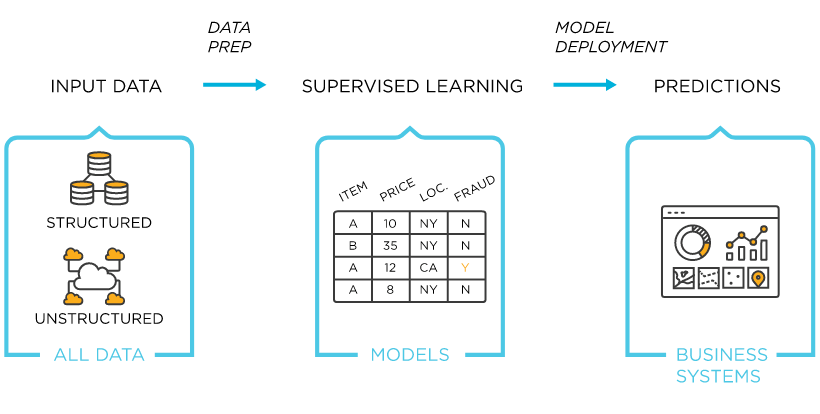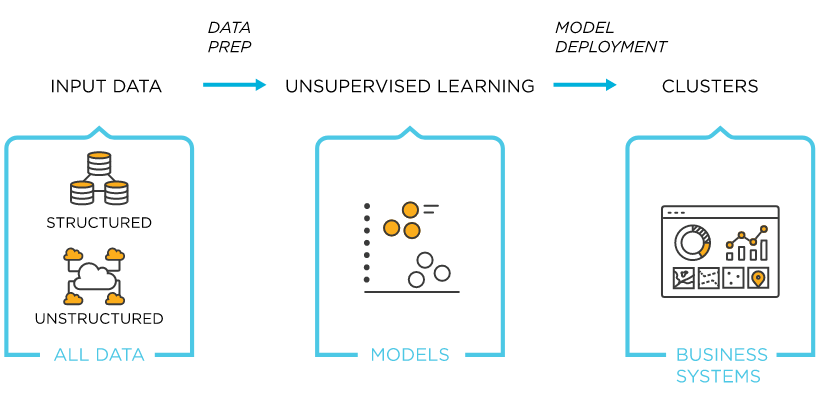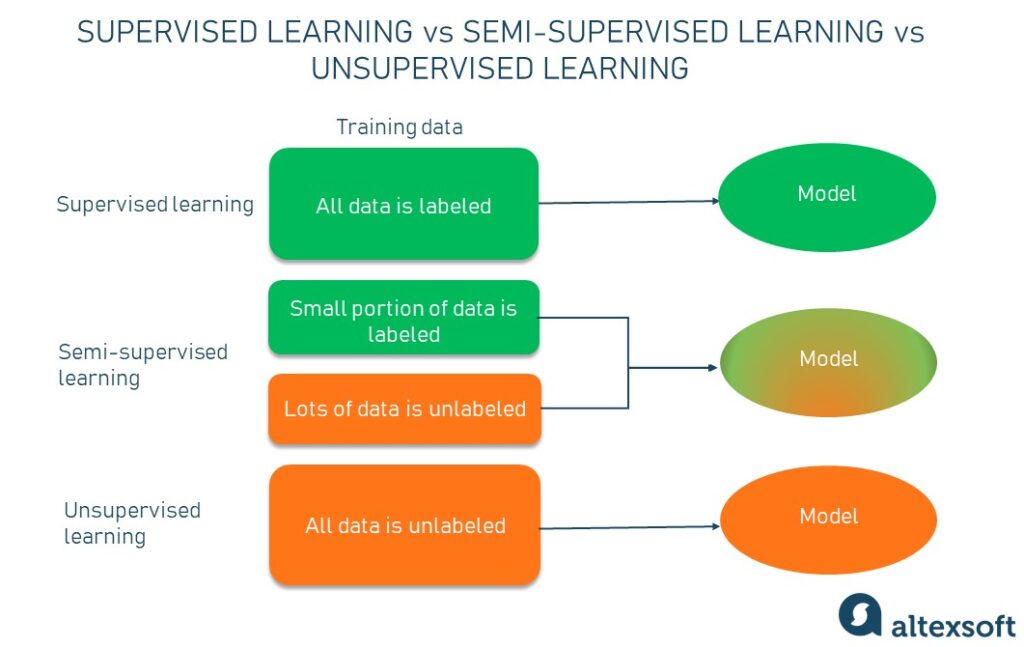Machine Learning Algorithms
Just a heads up!
We are living in the revolutionary age of human history where everything is going on the auto-pilot mode just like Tesla.
Thanks to Machine Learning (An integral part of Artificial Intelligence).
ML is playing a crucial role in making technology solutions more effective, efficient and smarter with its algorithm.
So, this article is going to help you with understanding Machine Learning algorithms along with some day-to-day applications.
First, understanding algorithms are important
From our smartwatches to our beloved search engine Google, we all are surrounded by algorithms!
An algorithm helps us to complete the task more efficiently and efficiently.
So, what is exactly the algorithm?
Let’s understand with a real-time example of Google.
You have some query regarding buying a smartphone and you searched it on Google. This means, you have given instructions to Google.
So, Google will show you the top 10 results based on your query.
But the thing here is that you first need to give or write on the Google search bar to get the desired result.
The algorithm is just like that.
It is a set of instructions that are given to the machine such as computers, search engines, and smartphones in order to complete the specified task.
But how do algorithms exactly work?
It works on a simple term – input and output.
Let’s start with the same example of Google.
When you search something on Google it considers your query as an input and hunts for the most relevant item in their large-scale database that exactly matches your search query.
So, the top 10 result is the output of your given input.
Explore the types of the machine learning algorithms
There are mainly four types of machine learning algorithms,
#1. Supervised learning:

Supervised learning is based on the labelled data set.
The aim of supervised learning is to classify or predict the accurate outcome.
Classification and regression are some of the common algorithms of supervised learning.
#2. Unsupervised Learning:

Unsupervised learning learns from the unlabelled data set.
It is used to examine the unknown patterns in the data.
As unsupervised learning doesn’t need manual instruction like supervised data, it is faster, efficient and cost-effective compared to supervised learning.
#3. Semi-supervised Learning:
It is a combination of supervised and unsupervised learning.
Semi-supervised learning is used when there is a lack of labelled data available for training.
The process contains a large amount of unlabelled and small amounts of labelled data.

#4. Reinforcement Learning:
Reinforcement learning is where a computer program or robot or intelligent agent interacts with a specific environment in order to perform on it and learn from the outcomes based on the trial and error method.
Here is a simple example of Reinforcement learning.

Top 10 machine learning algorithms that you should not avoid
#1. Regression algorithm:
It has the ability to predict outcomes based on labelled data.
Weather forecast, financial prediction, and stock price prediction are some of the examples of regression algorithms.
Explore the common regression algorithms.
- Linear Regression
- Ridge Regression
- Neural Network Regression
- Lasso Regression
- Decision Tree Regression
#2. Instance-based Algorithms:
It does not conduct explicit generalization.
The instance-based algorithm compares the new problem with the training data that are stored in the memory.
Explore the common Instance-based algorithms.
- K Nearest Neighbor (KNN)
- Self-Organizing Map (SOM)
- Learning Vector Quantization (LVQ)
- Locally Weighted Learning (LWL)
#3. Regularization Algorithms:
It is used to regularize the learning from the specific part or features.
Explore the common regression algorithms.
- Ridge Regression
- Elastic Net
- Least-Angle Regression (LARS)
#4. Decision Tree Algorithms:
It is used to construct a training model that contains the ability to predict the value of the target variable.
Explore the common decision tree algorithms.
- ID3
- CART (Classification and Regression Trees)
- Chi-Square
- Reduction in Variance
#5. Bayesian Algorithms:
It works based on the theorem of the Bayes.
Bayesian algorithms are majorly used for spam filtering and a recommendation system.
Explore the common Bayesian algorithms.
- Naive Bayes
- Gaussian Naive Bayes
- Multinomial Naive Bayes
#6. Clustering Algorithms:
It is an unsupervised learning algorithm to determine and group similar data points.
Furthermore, it is used to classify the data in a well-structured manner to make it easily understandable and manageable.
Explore the common clustering algorithms.
- Centroid-based Clustering
- Density-based Clustering
- Distribution-based Clustering
- Hierarchical Clustering
#7. Association Rule Learning Algorithms:
It is used to analyze the data patterns in the database.
In other words, association rule learning helps to identify the relationships between two variables.
Explore the common association rule learning algorithms.
- Apriori
- Eclat
- F-P Growth Algorithm
#8. Artificial Neural Network Algorithms:
This algorithm guides the machine or computer to process the data like the human brain.
Image and speech recognition, medical diagnosis and machine translation are some of its examples.
Explore its common algorithms.
- Convolutional neural network (CNN)
- Recurrent neural network (RNN)
- Deep Neural Network (DNN)
#9.Deep Learning Algorithms:
Deep learning algorithms are inspired by the human brain.
It teaches the machine or device to perform or think like the human brain.
Hence, it is majorly used in the healthcare, advertising, eCommerce and entertainment industries.
Explore its common algorithms.
- Convolutional Neural Network (CNN)
- Recurrent Neural Networks (RNNs)
- Long Short-Term Memory Networks (LSTMs)
#10. Dimensionality Reduction Algorithms:
This algorithm is used to lower the number of input variables in the data of training.
It is mainly used in signal processing, speech recognition and visualization.
Explore its common algorithms.
- Principal Component Analysis (PCA)
- Linear Discriminant Analysis (LDA)
- Generalized Discriminant Analysis (GDA)
Machine learning in healthcare
Healthcare is one of those industries that has witnessed the robust and result-driven use cases of machine learning.
From predicting care outcomes to reducing the overhead costs for the healthcare organization, machine learning is helping greatly to healthcare in every possible way.
Thus, the artificial intelligence market is experienced an enormous amount of growth in the past few years.
As per the reports, “The AI in the healthcare market is projected to grow from USD 6.9 billion in 2021 to USD 67.4 billion by 2027”
Explore some of the real-world examples of machine learning in healthcare.
- Disease identification
- Supports in the clinical assessment
- Improves the health records
- Prediction of the diabetes
- Finding the best possible way to diagnose the patient
- Improving the medical imaging diagnosis
- Helps in drug development and clinical trial research
- Virtual care assistance
This way, machine learning is enhancing the way care delivers to the patients.
Final words
Machine learning algorithms, especially deep learning algorithms are improving the healthcare industry.
Health tech solutions such as – healthcare app development, EMR/EHR, PACS, IoT, software development, and many more other systems are implementing machine learning algorithms to use the data in a most systematic, efficient, and effective way.
This is just the beginning of the AI and ML era. In the upcoming years, humans will witness the epicness of these state-of-the-art solutions in many forms in their daily lives.